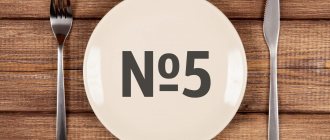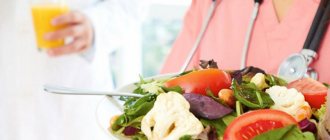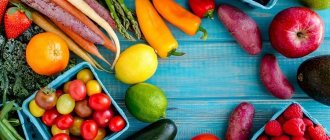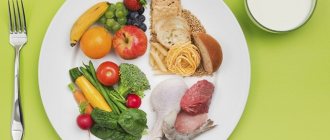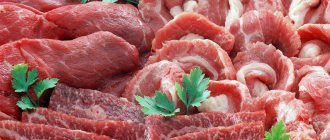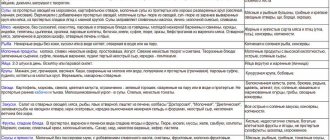The founder of gastroenterology and diet therapy in the USSR is considered to be the therapist, one of the organizers of the Institute of Nutrition in Moscow, Manuil Pevzner. The dietary nutrition system that he developed is aimed at treating certain diseases and is called the “table”. Nutrition programs according to Pevzner have been successfully used by doctors since the middle of the last century.
Let us consider in detail the second diet from this list, which is used for chronic diseases of the stomach and intestines, in particular, chronic gastritis with secretory insufficiency. Table No. 2 can be used for enteritis and colitis not only during the period of restoration of intestinal function, but also during the period of exacerbation. Another such diet is often prescribed after operations in the rehabilitation phase, as well as during the recovery phase after infectious diseases. We will learn what you need to eat and in what form, what you can prepare, and how to create a menu.
Diet rules
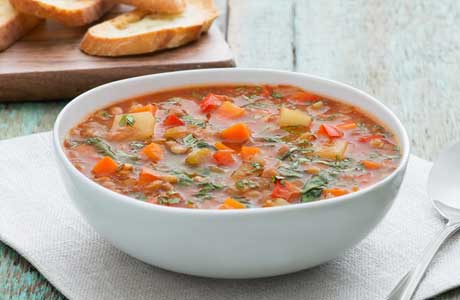
In order to achieve maximum effectiveness of the diet for chronic gastrointestinal diseases, you must follow the simple rules of therapeutic nutrition:
- limiting coarse fiber (bran, whole grain cereals and flour, beans, nuts, etc.), since consumption causes mechanical damage to the walls of the stomach,
- a ban on the consumption of milk (allowed only as part of dishes), since the acidity of the stomach subsequently decreases,
- lack of hot spices in the diet,
- for the preparation of dietary food, boiling, stewing, baking, steaming,
- maximum grinding of food to eliminate coarse pieces that can injure the gastric mucosa,
- consumption of highly fortified foods,
- fractional meals (4-5 times a day),
- drink up to 1.5 liters of liquid per day.
The daily calorie content of diet No. 2 should be 2900 kilocalories. The diet should include 100 grams. proteins and fats, and 400 gr. carbohydrates. The use of salt in dishes is also regulated - up to 12 grams - since the presence of sodium chloride in food stimulates enzyme activity.
Indications
There are several medical indications on the basis of which a specialist gastroenterologist, internist, pediatrician or family doctor prescribe diet 2, these include:
- Acute gastritis (inflammation of the stomach), enteritis (inflammation of the small intestine) or colitis (inflammation of the colon) at the stage of gradual restoration of the functional state of the digestive system, as well as a decrease in the severity of pathological changes. Diet 2 is prescribed for the purpose of a smooth transition to normal nutrition.
- Chronic enteritis or colitis, which has an isolated long-term course of more than six months and is not accompanied by inflammation of the liver tissue (hepatitis), structures of the hepatobiliary system (cholecystitis, cholangitis), as well as the stomach with a concomitant increase in secretion and acidity.
- Chronic gastritis, in which the functional and secretory activity of the stomach is characterized by a slight decrease. The diet is usually prescribed at the stage of exacerbation of the pathological process.
The use of dietary recommendations is justified to prevent the development and manifestation of pathological conditions, as well as to prevent exacerbation (relapse) of chronic pathology.
Diet 2 table - what you can and cannot eat (table)
The list of products that are allowed during the use of diet table No. 2 has a stimulating effect on the enzymatic system of the stomach and on the functioning of the intestines, which improves the breakdown of food and the absorption of nutrients.
| Products | What can you eat | What not to eat |
| Flour products | Dried wheat bread, savory pastries, dry biscuits, cookies, crackers | Fresh butter and puff pastries, rye bread, pancakes, pancakes |
| Meat and poultry | Lean beef, veal, rabbit, turkey, chicken. Milk sausages, doctor's and diet sausages | Lamb, pork, duck, goose. Canned food, smoked meats |
| Fish | Low-fat varieties | Fatty fish, salted, smoked fish, canned fish, fish roe |
| Fats | Butter, ghee, vegetable oil | Lard and other oils |
| Dairy | Kefir, curdled milk, cottage cheese, sour cream, mild cheese | Whole milk (only in dishes), ice cream, cream, sharp cheeses |
| Cereals | Rice, rolled oatmeal, oatmeal | Buckwheat, pearl barley, legumes |
| Pasta | Pasta, noodles | |
| Eggs | On diet table 2, eggs are allowed in almost any form, except hard-boiled | Hard-boiled eggs |
| Spices and seasonings | Bay leaf, cinnamon, cloves, citric acid, vanillin | Horseradish, pepper, mustard |
| Vegetables | Potatoes, carrots, beets, cauliflower, zucchini, pumpkin, tomatoes | Cucumbers, radishes, radishes, turnips, peppers. Marinated mushrooms |
| Fruits | Apples, oranges, tangerines, bananas | Pear, quince. Nuts, peanuts, seeds |
| Berries | Cherry | Gooseberries, red currants, raspberries, figs, dates, grapes |
| Dessert | Honey, pastille, jam, marshmallows, marmalade, jam | Halva, ice cream |
| Beverages | Rosehip decoction, tea, coffee, cocoa (in water), fruit juices | Grape juice, carbonated drinks, alcohol |
Contraindications
There are several of the following medical contraindications for prescribing diet 2:
- Pathological processes in the stomach, accompanied by an increase in the functional activity of the glands and an increase in secretion (hyperacid gastritis).
- Peptic ulcer of the stomach or duodenum.
- Erosive esophagitis (inflammation of the mucous membrane of the esophagus), which is the result of backflow of gastric contents caused by various reasons.
- Individual intolerance to most of the permitted foods that form the basis of the diet for diet 2.
- Food allergies caused by foods taken while following dietary recommendations.
If there is an individual intolerance or food allergy, the doctor makes adjustments to dietary recommendations, and the list of permitted products is usually significantly reduced.
Cooking features
In order for the therapeutic diet table 2 to have a positive effect on the gastrointestinal tract, special attention is paid to food preparation methods:
- Meat, poultry and fish can be boiled, stewed, baked, steamed and fried without breading, so that a crust does not form, which has a negative mechanical effect on the gastric mucosa. In the process of preparing meat and fish dishes, the veins and cartilage from the fillet are carefully removed.
- Eggs can be served in the form of fried and baked omelettes, as well as soft-boiled.
- From cereals you can prepare boiled and pureed porridges, puddings, zrazy, cutlets. Crumbly cereals are prohibited for consumption on diet number 2, as they mechanically irritate the walls of the stomach.
- Vegetables are stewed (zucchini, carrots), boiled (potatoes, cauliflower, beets, pumpkin). Fresh salads and roasted vegetable dishes are also served. At the same time, vegetables with coarse fiber and essential oils in their composition are removed from the diet.
- The preparation of soups is permitted in meat, fish, vegetable and mushroom broths with cereals, vegetables, and pasta. You can add meat products – meatballs – to the soup. Meat broths increase the release of hydrochloric acid.
- On a diet for gastritis, table 2, it is forbidden to drink whole milk, since this neutralizes hydrochloric acid in gastric juice. Cereal porridges with diluted milk are allowed.
- Fruits and berries in the diet should be ripe, soft, and not contain coarse grains or skins. It is allowed to prepare puree from raw and heat-treated fruits, jelly, compote, jelly, mousse.
Mechanism of therapeutic action
By choosing certain food products, as well as determining a rational regimen for their intake, several mechanisms of the therapeutic effect of diet 2 on the human body are realized:
- Providing the body with all the necessary vital organic compounds, vitamins and minerals.
- Reducing the load on all parts of the digestive tract, which promotes faster restoration of tissues that have undergone the development of a pathological process.
- Improving the digestion process due to moderate stimulation of the functional activity of the glands. This leads to better absorption of ingredients.
- Faster tissue regeneration in the area of development of the pathological process, which is facilitated by a balanced content of nonessential and essential amino acids in the diet.
The mechanism of the therapeutic effect of diet 2 is realized to a greater extent after a sufficiently long period of compliance with the basic recommendations, as well as the prescription of drug therapy if necessary.
Menu for the week
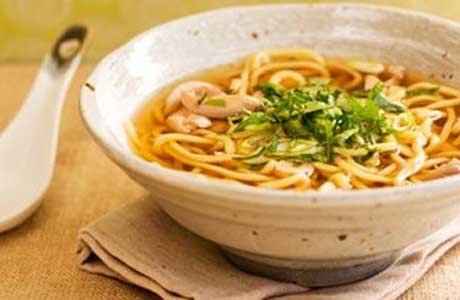
To create an optimal menu for every day for diet table 2 for diseases of the gastrointestinal tract, one should be guided by the principle of maximum variety in daily nutrition in order to provide the body with the necessary nutrients, vitamins and macro- and microelements.
Monday
- Breakfast: zucchini soup, fruit jelly.
- Lunch: sandwich, tea with sugar.
- Lunch: vegetable soup, jellied pike perch, mashed potatoes, tomatoes.
- Afternoon snack: carrots with honey.
- Dinner: lazy dumplings, yogurt.
Tuesday
- Breakfast: oatmeal on water with dried fruits.
- Lunch: baked apples.
- Lunch: broth with noodles, beef baked in sour cream, vegetable salad.
- Afternoon snack: tomato salad, sandwich.
- Dinner: zucchini puree.
Wednesday
- Breakfast: cheese sandwich, coffee.
- Lunch: liquid fruit jelly, biscuits.
- Lunch: borscht, stuffed fish, cauliflower pudding.
- Afternoon snack: boiled beets with sour cream.
- Dinner: carrot and meat puree.
Thursday
- Breakfast: noodles with meat, compote.
- Lunch: vegetable cream soup.
- Lunch: green borscht, veal cutlets, carrot puree.
- Afternoon snack: vegetable caviar.
- Dinner: cottage cheese with sour cream.
Friday
- Breakfast: sandwich with boiled sausage
- Lunch: omelet, beef zrazy.
- Lunch: cauliflower soup, chopped herring, beet puree.
- Afternoon snack: fresh carrots with apples and sour cream.
- Dinner: cottage cheese soufflé with berries.
Saturday
- Breakfast: baked cottage cheese and fruit cheesecake, compote.
- Lunch: pumpkin porridge.
- Lunch: borscht with mushrooms, jellied meat, vegetable stew.
- Afternoon snack: fruit, yogurt.
- Dinner: omelet with minced meat and vegetables.
Sunday
- Breakfast: sandwich with boiled ham, tea with sugar and milk.
- Lunch: stewed cauliflower, apple.
- Lunch: rice soup with tomato, boiled tongue with vegetables, stewed potatoes.
- Afternoon snack: kefir, cookies.
- Dinner: beef rice zrazy, tomatoes.
Prohibited Products
The use of dietary recommendations of table 2 implies the exclusion of the following foods:
- Raw vegetables without prior chopping.
- Legumes, as well as any dishes made from them, including soup.
- Okroshka.
- Pearl barley, barley, corn grits.
- Pickles, marinades, mushrooms.
- Pepper, garlic, radish, rutabaga, radish.
- Ice cream, chocolate in any form, confectionery with cream.
- Hard fruits or berries containing seeds (raspberries, hard-skinned gooseberries, dates, figs).
- Lard, beef, lamb fat.
- Kvass, grape juice.
- Fatty hot sauces, mustard, spices.
- Flour products made from rich, puff pastry.
Dish recipes
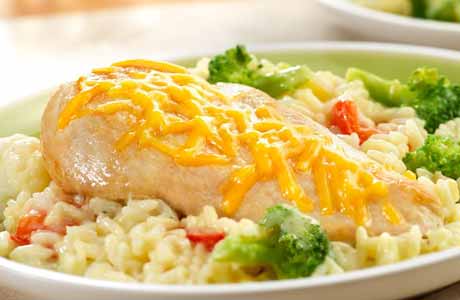
Despite the fact that diet table 2 is somewhat restrictive, you can use many recipes for delicious dishes that will be useful for enterocolitis and chronic gastritis with low acidity. When choosing recipes, you need to pay attention to the amount of nutrients (especially proteins) in the diet.
Fish baked with pasta
For cooking you will need up to 1 kilogram of fish (pike perch, cod, pike, sea bass), 800 gr. pasta (boiled), mild cheese, butter, parsley.
For the sauce: tomato paste (tablespoon), sour cream (300 ml), water or vegetable broth (50 g).
Preparation of the sauce: thoroughly dilute the tomato paste and broth, mix with sour cream and bring to a boil.
The fish fillet should be washed, cleaned of cartilage, cut into medium-sized pieces, salted and fried until half cooked. Cooked and washed pasta is seasoned with oil and sauce. Place pasta and fish on a baking sheet, pour sauce on top, sprinkle with grated cheese. Bake for 30 minutes.
Steamed chicken fillet
To prepare the dish, you need 1 kg of chicken fillet, 30 grams of butter, sour cream, salt, herbs.
The chicken fillet is washed, peeled from the film and beaten a little, giving the meat the shape of a cutlet, and salted. The saucepan is greased with oil, water is poured in, and the lid is closed. The fillet is cooked over low heat until done.
The dish is served with vegetable puree or viscous porridge, and before serving, it is greased with sour cream and sprinkled with herbs.
Liquid millet porridge
To prepare porridge, you need the following products: a glass of millet, 100 gr. water, a glass of milk, sugar, salt, butter (30 gr.).
Sort the millet, wash it, add it to boiling water and cook for 15 minutes. Next, add salt, sugar to taste, butter to the porridge, pour in hot milk and cook for another 50 minutes, stirring.
Rose hip jelly
Products needed for making jelly: a heaped tablespoon of dried rose hips, sugar (60 grams), a tablespoon of potato starch, citric acid.
Before cooking, dry berries are sorted, washed, filled with hot water (1.5 liters) and left for two hours to swell. Next, boil the rose hips in the same water for 10-15 minutes.
The resulting broth should be filtered, added sugar and citric acid, and brought to a boil. Next, starch is added to the liquid and stirred quickly to prevent lumps from forming. After the jelly boils, remove the pan from the heat and pour into molds for cooling.
Advantages and disadvantages
| pros | Minuses |
|
|
